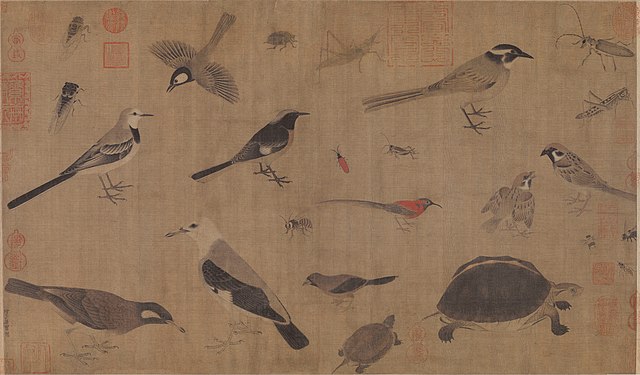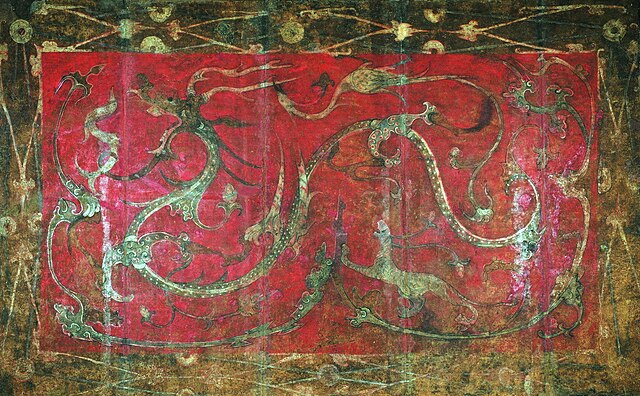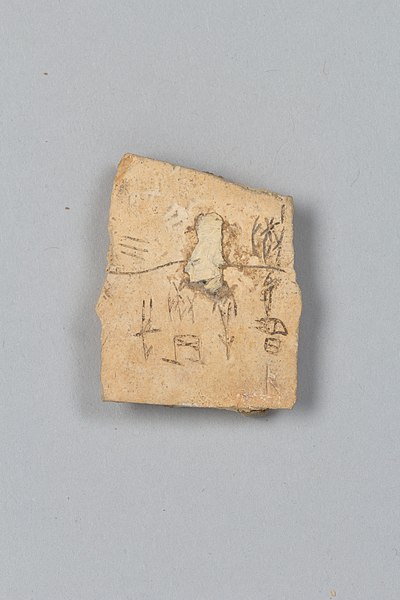Chinese painting is one of the oldest continuous artistic traditions in the world. Painting in the traditional style is known today in Chinese as guó huà, meaning "national painting" or "native painting", as opposed to Western styles of art which became popular in China in the 20th century. It is also called danqing. Traditional painting involves essentially the same techniques as calligraphy and is done with a brush dipped in black ink or coloured pigments; oils are not used. As with calligraphy, the most popular materials on which paintings are made are paper and silk. The finished work can be mounted on scrolls, such as hanging scrolls or handscrolls. Traditional painting can also be done on album sheets, walls, lacquerware, folding screens, and other media.
Huang Quan's Almanac of Birds and Beasts; Late Tang, 10th century CE
Early Autumn by Qian Xuan (1235-1305)
Views of Xiaoxiang by Dong Yuan(932-962). Dong is considered as one of the originators of landscape painting styles; the scales of such paintings were often huge, with minuscule yet intricate pastoralist subjects showing the relative enormity of the landscape. Zoom into the left to see a group of men engaging in seine-haul fishing.
Western Han lacquered dragon mural, c. 2nd century BCE
Chinese calligraphy is the writing of Chinese characters as an art form, combining purely visual art and interpretation of the literary meaning. This type of expression has been widely practiced in China and has been generally held in high esteem across East Asia. Calligraphy is considered one of the four most-sought skills and hobbies of ancient Chinese literati, along with playing stringed musical instruments, the board game "Go", and painting. There are some general standardizations of the various styles of calligraphy in this tradition. Chinese calligraphy and ink and wash painting are closely related: they are accomplished using similar tools and techniques, and have a long history of shared artistry. Distinguishing features of Chinese painting and calligraphy include an emphasis on motion charged with dynamic life. According to Stanley-Baker, "Calligraphy is sheer life experienced through energy in motion that is registered as traces on silk or paper, with time and rhythm in shifting space its main ingredients." Calligraphy has also led to the development of many forms of art in China, including seal carving, ornate paperweights, and inkstones.

Chinese calligraphy
Oracle bone fragment, Shang dynasty (ca. 1600–1046 BC)
Memorial to Yueyang Tower by Fan Zhongyan, Song dynasty
On Calligraphy by Mi Fu, Song dynasty








